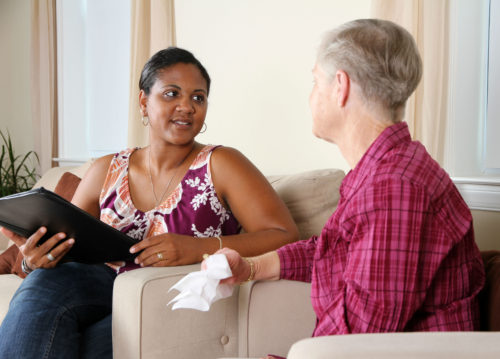The pros and cons of taking notes during and after a mental health session
Taking detailed notes is an integral part of providing high quality care in mental health. Notes are useful in sharpening the understanding of patient problem areas, tracking the progress of care, creating effective treatment plans, and, depending on the nature of your practice, are a requirement for payers or regulatory bodies.
There is the long-standing conversation over how to best handle clinical notes and documentation. Some providers elect to forego any note taking while in session, following up with proper documentation later. Others jot down important details on a pad of paper while in session and flesh out the details after the session ends. There are also providers who choose to take notes concurrently with the session via EHR. Concurrent notes are a subject of controversy, particularly in the mental health space. Establishing trust through face-to-face engagement is paramount during a session, and any perceived distraction (note taking included) runs the risk of appearing uninvested.
The challenge for mental health providers is to weigh their note taking options and come up with a system that works best for their unique needs.
After Session
A popular approach to note taking is to completely skip it while in session. The benefit of this method is that providers can offer their complete focus and emotional availability without any physical impediments with the patient. This can be very useful in developing a trusting relationship early on, but is not without its share of drawbacks as well.
Recalling the session from memory alone poses a potential risk to forget or misconstrue critical details during documentation. It is also possible that during a session the provider might become so preoccupied with what he/she needs to remember that it creates some emotional distancing during time spent with the patient. Lastly, there is the issue of time. Should a session happen to go over, the provider might not have enough time to document everything before the next appointment comes up. In a worst case scenario, this could create a cascading effect and have the provider on the hook to remember the details of multiple appointments when time eventually becomes available.
Partial Notes on Paper
Making hasty notes on a paper pad with the intention of fleshing out the details after the session is another common approach to note taking. This method is beneficial in that most of the critical details of the session are captured, and using a paper pad for notes is generally perceived as less disruptive to the session as a tablet or a laptop. Providers who prefer this approach face the challenge of filling in the gaps of information after the session ends. Overall, it’s a reasonable compromise between taking notes concurrently and not, though the benefits aren’t particularly overwhelming and the provider spends as much if not more time in creating good documentation.
Concurrent Documentation
Documenting concurrently in session is a less common method in mental health, but is gaining in popularity as technology becomes more accommodating and patients by and large have grown more accustomed to seeing computers in other clinical settings. The advantage of concurrent documentation is that everything in session gets captured in detail in the EHR. Notes that are thorough and accurate are essential in the ongoing provision of quality care, but the implementation of technology into the session is not without a cost. With mental health’s distinct emphasis on human interaction, having to factor a laptop or tablet into the equation inarguably alters the dynamics between provider and patient. Many mental health professionals see this as a drawback, though the proven benefits of concurrent documentation must also be accounted for.
Ultimately, there is no single solution that will work perfectly for every practice. Mental health practices will need to consider the pros and cons of each documentation method and decide what works best for them and their patients.




